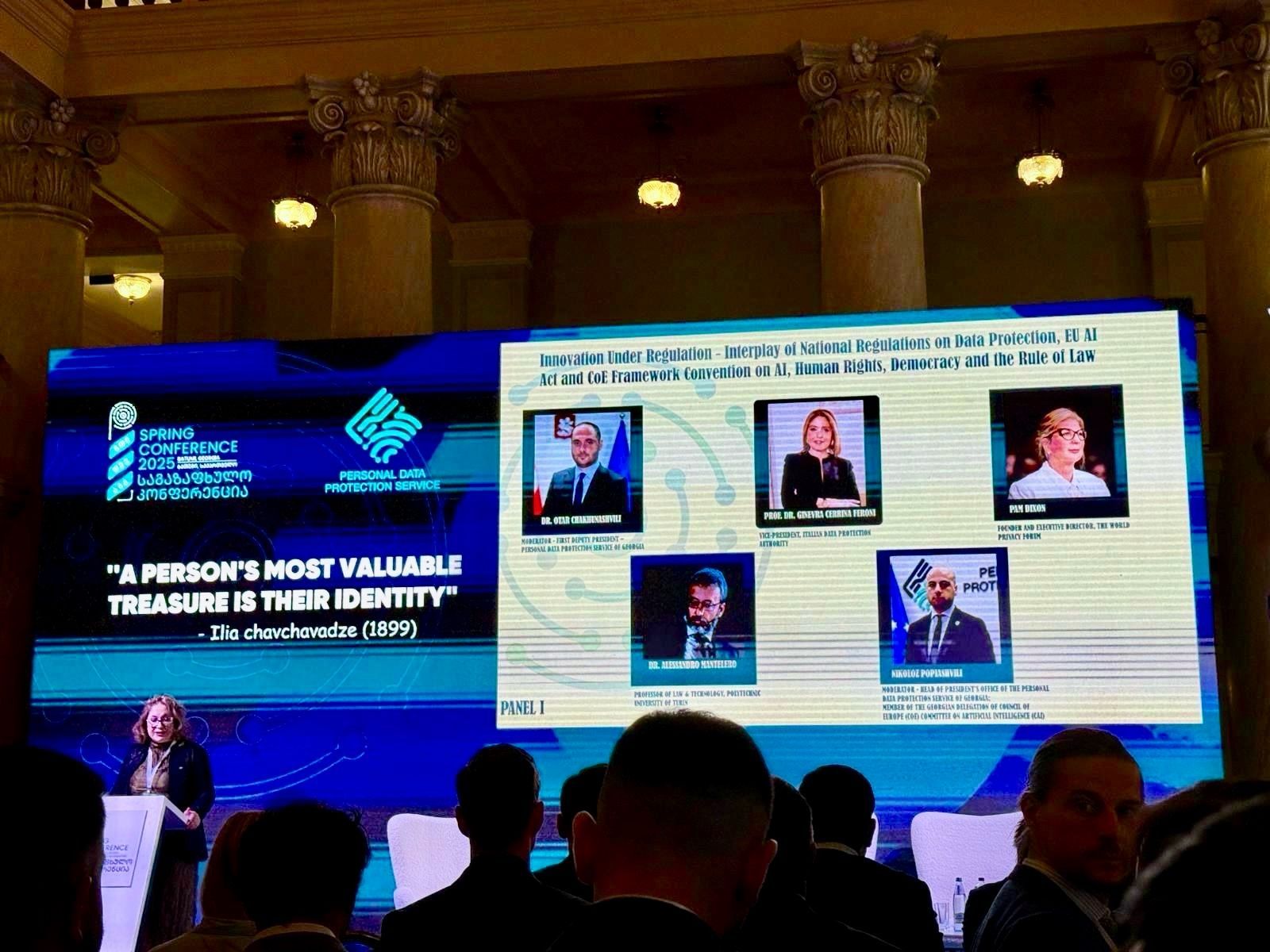Rhetoric and facts: The European path to value-driven AI in a multipolar world.
I had the great pleasure of giving a presentation at the 33rd European Conference of Data Protection Authorities, which took place in Batumi between the 6th and 9th of May. The conference also hosted a dedicated side event on the FRIA (Fundamental Rights Impact Assessment) model that I developed in Catalunya with the Autoritat Catalana de Protecció de Dades.
In dealing with the crucial topic of the first panel on ‘Innovation under regulation’, my presentation focused on the existing gap between rhetoric and facts with regard to the the European approach to value-driven AI.
In the current multipolar world, three main rhetoric arguments are used against the European approach: (i) the rhetoric of disruptive innovation; (ii) the rhetoric of the European rule-based approach; (iii) the rhetoric of Euro-colonialism.
The facts are different: (i) leading technology companies have adopted the ‘fait accompli’ strategy, which is the opposite of responsible innovation (see e.g. the launch of LLMs), (ii) following Reidenberg 1998, Europe is experiencing difficulties in regulating technology using means other than hard law (Mantelero, 2025), (iii) neither the Brussels effect nor the global North-South logic applies; the distinction is simply between AI-providing countries and AI-adopting countries, with the latter group including European countries whose regulations could therefore serve as a model.
In this multipolar world, what can the EU and European countries do? The answer lies in adopting a third way between market-driven AI and state-controlled AI that is grounded in fundamental rights, a key pillar of both the EU and the Council of Europe. To effectively implement this European approach, it is crucial to develop an appropriate model for a Fundamental Rights Impact Assessment (FRIA) that neither reduces fundamental rights protection to a mathematical exercise nor remains at a very high level. The model must be tested in the real-world scenarios, rather than remaining a theoretical framework.
With this in mind, we presented the FRIA model developed in Catalunya. This is the only FRIA model that has been tested in multiple high-risk cases (Annex III, AI Act) and provides a streamlined implementation of the AI Act requirements.
Based on a methodology validated in peer-reviewed scientific publications (see references in the report) and tested in real-life use cases (some of which are included in the report), it has already been adopted in other countries (Croatia). We hope that it will contribute to the work of the AI Board on FRIA by answering the most insidious rhetorical argument against European AI regulation: the rhetoric of cost and simplification. The only way to counter this argument is to make legal compliance easier by providing concrete and effective tools.
